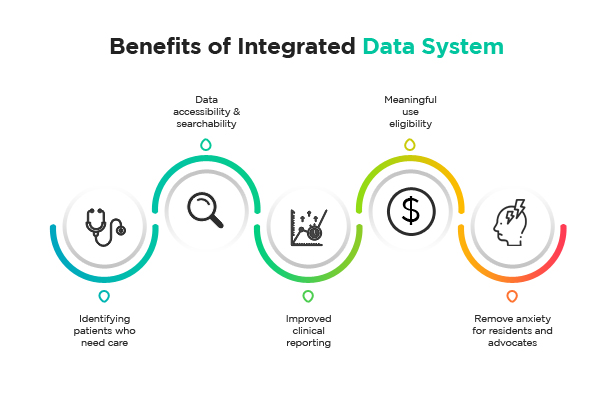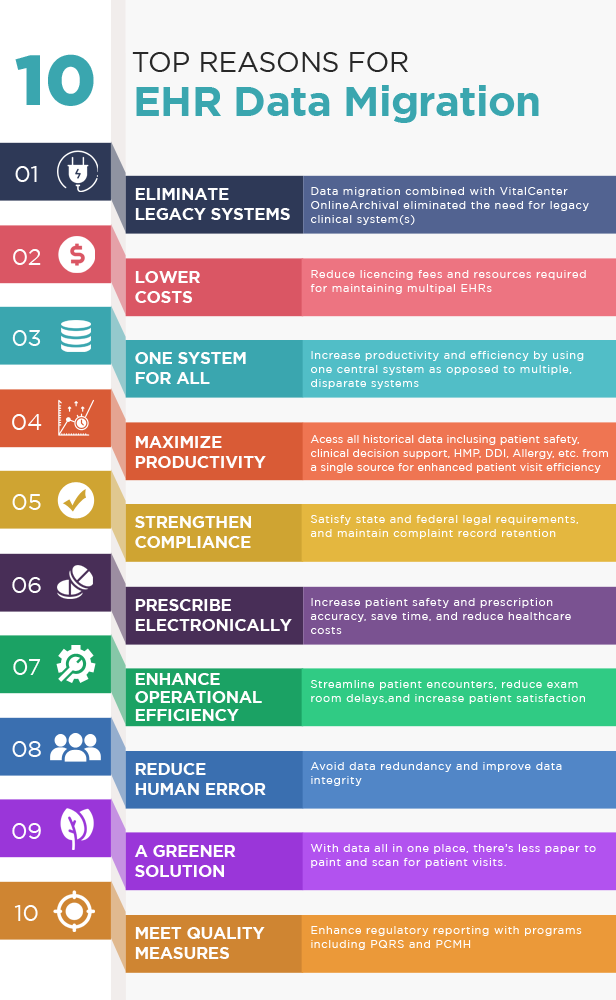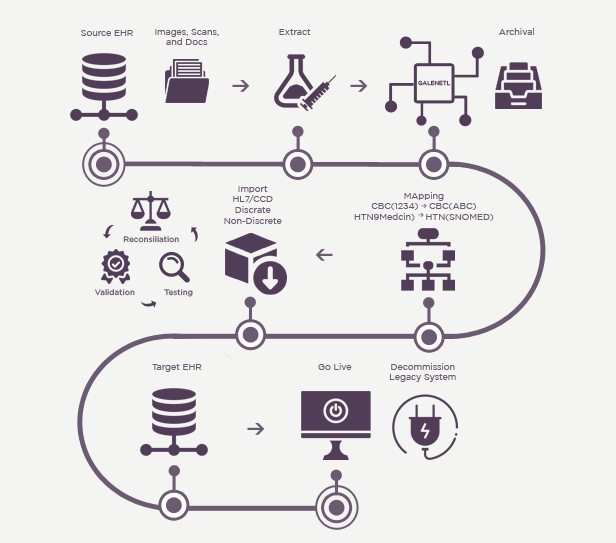Healthcare professionals often struggle with maintaining medical records on paper, and it can be a time-consuming process. Manually entering patient data is also labor-intensive and may increase errors. Medical errors can be expensive for US healthcare, and that is why EHR serves useful for solving this problem.
What is EHR?
EHR stands for electronic health records, a digital version of real-time patients’ records by transitioning from paper to electronic health records. Electronic health records allow easy and secure access to patient information to authorized users. Electronic medical records systems form an essential component of healthcare IT. They may comprise a patient’s medical history, clinical diagnoses, medications prescribed, treatment plants, important dates, images, tests, and results. Medical informatics and other health information systems require a common platform like EHR for their need of patient data. EHR systems are also designed to make it easier for healthcare providers to assess patient data and make decisions. Medical records electronic availability creates a safe system that records essential patient information and saves time. Healthcare providers can share patient data with other care providers and organizations such as laboratories, specialists, and pharmacies using the electronic medical records system. The EHR provides automatic access to patient information and assists in streamlining the clinician’s workflow. In this way, healthcare professionals can have all the information required for patient care for education and practice management, stored in one place. Let’s have a closer look at the advantages and disadvantages of EHR integration.
Benefits of EHR Integration

The advantages of EHR systems are:
Improve healthcare providers’ productivity: EHR integration speeds up the process of diagnoses and digitize administrative work associated with nearly 30% of healthcare costs. Implementing an EHR system in a hospital is a big time-saver because healthcare professionals and staff no longer need to spend time finding patient files. Additionally, EHR integration lowers transcription costs, gives 24/7 access to patient information, and improves billing and appointment scheduling. Patient information is available whenever needed and from any healthcare source. EHR promotes healthcare management and population health management. Doctors and other healthcare professionals get more time to evaluate and treat patients, thus saving time previously invested in looking for information. EHR offers Integrated Healthcare Solutions by gathering patient data from multiple sources in one place, a process that supports better decision-making.
Enhanced patient satisfaction: Electronic medical records create a seamless flow of information that transforms the quality of care delivered. Patients can also access and monitor their data and identify areas that need improvement. Such health records management helps patients to deal with their illnesses, especially chronic diseases. Healthcare providers can get easy and quick access to reports and tests made available to patients. There is an overall improvement in the delivery of materials and the efficiency of care given to patients. Patients receive accurate, up-to-date, and complete information at the point of care. There is a good patient engagement system that benefits patients from improved coordination and communication with healthcare professionals.
Increased Data Security: Important patient data can be shared safely with patients and other clinicians. Prescriptions and patient data are recorded securely with increased privacy. Electronic health records allow for accurate medical records management.
Reduces error: EHR systems avoid mistakes in medical billing and patient record keeping. Paper works are reduced drastically, which in turn decreases the costs. Lack of errors also reduces duplication of testing, further saving money.
EHR Integration challenges

Although EHRs offer several advantages, the implementation of electronic health record systems can prove to be, and there are barriers to implementing EHR. Some of the significant hurdles EHRs face include interoperability and data privacy.
EHR Interoperability: Healthcare interoperability defines the ability of various software programs to exchange data. This is a major challenge faced by the healthcare sector. Electronic medical record systems are created to share patient data, including medical history amongst different healthcare providers and organizations. EHR interoperability is essential for obtaining a complete picture of the patient’s health. However, EHR interoperability issues are one of the common problems with EHR.
Training: Ensuring proper EHR integration in hospitals requires proper staff training about the new system and workflow. Physicians and medical professionals must invest time and effort in adapting to the EHR system. Training can be cumbersome for the staff and management. It can also be challenging to engage and gauge up interest among the staff.
Data migration: It is the process where data is transferred from one location to another, and also involves her data conversion from one format to another, or one application to another. EHR migration process consists of moving large chunks of data, and this can be very complex. Hospitals often struggle with this EHR integration step. It can become a total nightmare for the staff to export paper-based records digitally and keep them up-to-date.
Data privacy: Data security concerns are other barriers to EHR integration. There may be a risk of data leakage or cyber-attacks that threaten data security. Physicians and patients insist on data protection during electronic data exchange, but that can become a problem in the presence of security breaches. Data security and consumer privacy pose another obstacle when it comes to EHR integration. Furthermore, in breaches, the organization can face legal hassles and spend huge amounts of money for settling the dispute.
EHR Integration Cost: EHR offers a wide array of plus points, but the cost of implementing an electronic health record is high. The selection, EHR integration, optimization of EHR, and unplanned expenses may cross your capital budget without you realizing it.
5 Key Factors for Successful EHR Migration

Some problems usually accompany EHR implementation; the effect of these can be avoided by developing strategies and finding suitable solutions. However, if appropriate measures are not in place to overcome EHR’s challenges, additional issues such as drops in revenue and productivity may arise. Here’s how the issues with EHR integration can be avoided:
1. Identify the parameters for developing a clear goal-setting plan.
You can begin this step by selecting and employing an IT staff responsible for extracting data from the current system and uploading it to the new EHR. This discovery process in EHR integration will give you a clear picture of dealing with various questions such as the data that needs to be converted to medical records electronic, how much time would be needed for EHR data migration, how to access scanned images, and so on.
2. Select the data carefully to simplify the EHR integration process.
Data selection will depend on the duration for which your practice has been into business. You may need data from many previous years, but you can choose to convert only recent data into medical records electronic. The stakeholders must agree on the data that can and cannot be migrated. Choosing important data and a method of data conversation will save a great deal of your time and finances.
3. Review to ensure the accuracy of the data
After data selection and mapping for the new EHR system requirements, the responsibility can be handed over to the new EHR vendor. IT staff of EHR vendors should start working on the conversion of data and performing a series of tests. The EHR vendor should pay attention to details during the entire migration process. The time required to complete an EHR migration will be influenced by factors, such as the amount and quality of data to be migrated. When the migration process is ongoing, you and the vendor must review and ensure the accuracy of the data migrated and whether all the information is where it should be. Ensure that you and the vendors are satisfied with the EHR migration process and the data quality.
4. Prioritize records and plan the data migration
An EMR migration is switching from an existing EMR system to a new EMR system. It allows better planning and goal setting and helps identify the data to be migrated and its quality. A successful EMR integration process will enable overcoming the challenges faced with data migration alone. Another way to overcome this is to prioritize records for determining how far back the data should be migrated. Beginning with the recent files and working your way backward so that the most recent information is available in the EHR system would serve beneficial. You can also appoint a person-in-charge of handling new information and looking over the new system.
5. Select the EHR integration strategy
Depending upon the interoperability, select the EHR integration strategy. If full interoperability seems challenging to accomplish, then incorporate third-party add-ons or other technology solutions. Having the right tools and technologies would help in dealing with interoperability issues.
Conclusion
EHR integration would ease the difficulties in handling data manually. It would also speed up the process and provide better quality care to patients. Implementing medical records electronic would support data integration, where all patient data will be available at a one-point source. Feedback from various healthcare providers can be collected, thereby resulting in enhanced patient treatment. The patients also benefit from an electronic health record because it allows them to track their assessments and reports. EHR also has its cons, but with adequate planning and strategies in place, you can overcome these hurdles.
References:
https://www.healthit.gov/faq/what-electronic-health-record-ehr
https://www.businessinsider.com/electronic-health-records-benefits-challenges?IR=T
https://www.ncbi.nlm.nih.gov/pmc/articles/PMC2793588/
https://ipatientcare.com/blog/successful-ehr-data-migration-steps/
https://www.healthcareitnews.com/news/top-10-factors-successful-ehr-implementation
https://www.healthit.gov/topic/health-it-basics/benefits-ehrs
https://www.healthit.gov/faq/what-are-advantages-electronic-health-records
http://www.americanehr.com/blog/2011/06/problems-and-challenges-with-data-migration/
https://www.netapp.com/knowledge-center/what-is-data-migration/
https://www.ehrinpractice.com/ehr-implementation-challenges.html
https://www.ontariomd.ca/iet/transition%20support/emr_data_migration_guide.pdf
OSP is a trusted software development company that delivers bespoke solutions as per your business needs. Connect with us to hire the best talents in the industry to build enterprise-grade software.

How can we help?
Fill out the short form below or call us at (888) 846-5382
Looking for software solutions to build your product?
Let's discuss your software solutions for your product in our free development acceleration call!
Get In Touch arrow_forwardDiscuss Your Project Handover with a team of expert Book a free consultation arrow_forward
About Author

Written by Riken Shah linkedin
Riken's work motto is to help healthcare providers use technological advancements to make healthcare easily accessible to all stakeholders, from providers to patients. Under his leadership and guidance, OSP Labs has successfully developed over 600 customized software solutions for 200+ healthcare clients across continents.

















